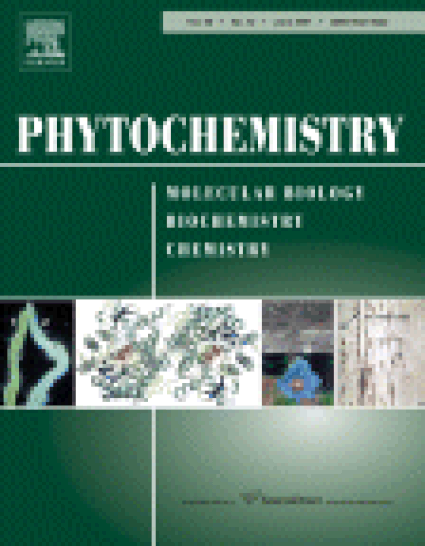
Article
Jasmonate biosynthesis in Arabidopsis thaliana requires peroxisomal β-oxidation enzymes – Additional proof by properties of pex6 and aim1
Phytochemistry
(2007)
Abstract
Jasmonic acid (JA) is an important regulator of plant development and stress responses. Several enzymes involved in the biosynthesis of JA from α-linolenic acid have been characterized. The final biosynthesis steps are the β-oxidation of 12-oxo-phytoenoic acid. We analyzed JA biosynthesis in the Arabidopsis mutants pex6, affected in peroxisome biogenesis, and aim1, disrupted in fatty acid β-oxidation. Upon wounding, these mutants exhibit reduced JA levels compared to wild type. pex6 accumulated the precursor OPDA. Feeding experiments with deuterated OPDA substantiate this accumulation pattern, suggesting the mutants are impaired in the β-oxidation of JA biosynthesis at different steps. Decreased expression of JA-responsive genes, such as VSP1, VSP2, AtJRG21 and LOX2, following wounding in the mutants compared to the wild type reflects the reduced JA levels of the mutants. By use of these additional mutants in combination with feeding experiments, the necessity of functional peroxisomes for JA-biosynthesis is confirmed. Furthermore an essential function of one of the two multifunctional proteins of fatty acid β-oxidation (AIM1) for wound-induced JA formation is demonstrated for the first time. These data confirm that JA biosynthesis occurs via peroxisomal fatty acid β-oxidation machinery.
Keywords
- Jasmonate biosynthesis,
- Arabidopsis,
- β-Oxidation,
- aim1,
- pex6,
- Peroxisome
Disciplines
- Biochemistry,
- Biology and
- Botany
Publication Date
June 1, 2007
DOI
10.1016/j.phytochem.2007.04.024
Citation Information
Carolin Delker, Bethany K. Zolman, Otto Miersch and Claus Wasternack. "Jasmonate biosynthesis in Arabidopsis thaliana requires peroxisomal β-oxidation enzymes – Additional proof by properties of pex6 and aim1" Phytochemistry Vol. 68 Iss. 12 (2007) p. 1642 - 1650 Available at: http://works.bepress.com/bethany-zolman/6/
